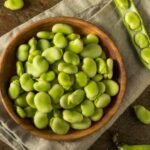A Flat White is a coffee beverage originating from Australia and New Zealand. It’s known for its creamy texture and balanced coffee-to-milk ratio. Unlike a latte, it features a velvety microfoam and has a stronger coffee flavor.
Flat White Coffee Recipe

Ingredients
- Espresso beans (14–18g for a double shot)
- Milk (preferably whole milk for the best texture and taste)
- Optional: Sugar or sweetener (based on preference)
Equipment
- Espresso machine
- Grinder (for fresh coffee beans)
- Milk pitcher
- Thermometer (optional, for milk)
- Coffee scale (for accuracy)
Preparation Steps
Step 1: Grind the Coffee
- Measure 14–18g of coffee beans (use a scale for precision).
- Grind the beans to a fine consistency, suitable for espresso (should feel like fine beach sand).
Step 2: Pull the Espresso Shot
- Preheat your espresso machine.
- Add the ground coffee into the portafilter and tamp evenly with firm pressure to create a level surface.
- Insert the portafilter into the machine.
- Brew a double shot of espresso (should take about 25–30 seconds for optimal extraction).
- Set aside your freshly brewed espresso.
Step 3: Steam the Milk
- Pour cold milk (about 150–200ml) into a milk pitcher. Use more or less depending on your cup size.
- Submerge the steam wand into the milk and turn on the steam.
- Start by introducing air: keep the wand near the surface for 1–2 seconds to create microfoam. It should create a gentle hissing sound.
- Submerge the wand slightly and position it at an angle to create a vortex, heating the milk evenly.
- Target temperature: 55–65°C (130–150°F). Avoid overheating to prevent scalding.
- The milk should have a silky texture with tiny bubbles (microfoam).
Step 4: Assemble the Flat White
- Hold your cup with the brewed espresso shot.
- Swirl the milk pitcher to ensure a uniform texture.
- Slowly pour the steamed milk into the espresso, starting from a height and gradually lowering the pitcher as you pour. Aim for a smooth and controlled pour.
- Stop once the espresso is evenly integrated, leaving a small layer of microfoam on top.
- If skilled, you can create latte art by adjusting your pouring technique.
Serving Suggestions
- Serve immediately in a 5–6 oz ceramic cup for the authentic Flat White experience.
- Pair with a biscotti or croissant for a delightful treat.
- Optionally, sprinkle a light dusting of cocoa powder or cinnamon for added aroma.
Tips for the Perfect Flat White
- Use freshly roasted coffee beans for maximum flavor.
- Practice milk steaming to achieve a consistent microfoam.
- Adjust the coffee-to-milk ratio to suit your taste preferences but avoid overloading with milk—it’s meant to highlight the espresso.
- Experiment with non-dairy alternatives like oat milk or almond milk, but choose barista-specific versions for better steaming results.
Enjoy your creamy, perfectly balanced Flat White! ☕
History and Origin of the Flat White
The Flat White is a coffee drink steeped in controversy regarding its origins. Both Australia and New Zealand claim to have invented this creamy, espresso-based beverage. Let’s delve into its story and how it evolved into a global coffee culture icon.
The Core Idea of a Flat White
A Flat White is characterized by:
- A double shot of espresso, giving it a strong coffee flavor.
- Steamed milk with microfoam, creating a velvety texture without a thick frothy layer.
This combination sets it apart from a latte (which has more milk and foam) and a cappuccino (which has equal parts espresso, milk, and foam).
Key Points in the History
1980s: The Debate Begins
- New Zealand Claim:
- In 1989, a Wellington café called Barista is believed to have first used the term Flat White.
- The name arose as a way to describe a “flat” coffee without the thick froth of cappuccinos, appealing to those who wanted a simpler milk-based coffee.
- According to some accounts, a failed attempt to create a cappuccino with frothy foam led to the “flat” name.
- Australian Claim:
- Australians argue the Flat White originated in Sydney during the mid-1980s.
- Alan Preston, owner of Moors Espresso Bar in Sydney, claimed to have put “Flat White” on his menu in 1985.
- The drink became synonymous with a stronger espresso flavor paired with silky milk, catering to Australian tastes.
Growth in Popularity
- 1990s–2000s:
- The Flat White gained traction across coffee shops in both Australia and New Zealand.
- It became a cultural staple for locals, symbolizing simplicity and coffee craftsmanship.
- Global Spread:
- 2000s: Expats and travelers from Australia and New Zealand introduced the Flat White to other parts of the world.
- The drink became especially popular in the UK during the early 2000s, spearheaded by Australian and New Zealand-owned coffee shops like Flat White Café in London.
- 2010s: The Flat White gained mainstream attention when Starbucks added it to their global menu in 2015, cementing its place as an international favorite.
What Makes the Flat White Unique?
- The Coffee-Milk Ratio:
- Compared to a latte, a Flat White uses less milk, allowing the espresso to shine.
- The result is a creamier, more concentrated coffee experience.
- The Microfoam:
- The milk is steamed to a fine texture, blending seamlessly with the espresso without separating into layers.
- Cultural Significance:
- For many Australians and New Zealanders, the Flat White is more than a beverage—it’s a reflection of their artisanal coffee culture and preference for bold flavors.
Conclusion: A Shared Legacy
While the debate over its origins may never be resolved, the Flat White represents the ingenuity of Australian and New Zealand baristas in creating a globally cherished coffee drink. Whether you’re sipping one in Sydney, Wellington, or New York, the Flat White is a testament to the skillful balance of simplicity and sophistication.
Popularity of the Flat White Around the World
The Flat White has evolved from its roots in Australia and New Zealand into a globally recognized coffee beverage. Its creamy texture, rich espresso flavor, and balanced coffee-to-milk ratio have resonated with coffee enthusiasts across diverse regions. Here’s a breakdown of who loves the Flat White and where it’s most popular.
1. The Flat White’s Core Audience
Flat White enthusiasts often share these characteristics:
- Coffee Purists: Those who enjoy the bold, undiluted flavor of espresso paired with just enough milk to create balance.
- Artisanal Coffee Lovers: Fans of barista craftsmanship, appreciating perfectly steamed microfoam and latte art.
- Health-Conscious Drinkers: People seeking a less milky option compared to a latte or cappuccino often gravitate toward the Flat White.
- Minimalists: Those who prefer simplicity in coffee drinks without excessive foam or sugary add-ins.
2. Countries That Love the Flat White
Australia
- The Flat White originated here (or in New Zealand, depending on whom you ask) and is deeply embedded in Australian coffee culture.
- Australians are passionate about their artisanal coffee scene, and the Flat White is a staple in local cafés and brunch menus.
New Zealand
- Just as popular as in Australia, New Zealanders often claim the Flat White as their own creation.
- It’s a symbol of their love for espresso-based drinks made with precision.
United Kingdom
- The UK embraced the Flat White in the 2000s, thanks to the influence of Australian and New Zealand café culture.
- Cities like London, with its vibrant coffee scene, have seen the Flat White become a trendy choice in independent coffee shops.
United States
- In the US, the Flat White gained traction after Starbucks added it to their menu in 2015.
- Coffee lovers in cities like New York, San Francisco, and Seattle appreciate the drink for its stronger coffee flavor and creamy texture.
Canada
- Canadians, particularly in metropolitan areas like Toronto and Vancouver, have adopted the Flat White as part of their growing artisanal coffee scene.
Europe
- Countries like Germany, Italy, and the Nordics have embraced the Flat White as part of their coffee culture, especially in urban centers with an interest in specialty coffee.
Asia
- In cities like Tokyo, Seoul, and Singapore, the Flat White has gained popularity among young professionals and expats frequenting high-end cafés.
- It’s seen as a refined, premium coffee drink that fits well with Asia’s burgeoning specialty coffee trend.
Middle East
- Dubai and other cities with vibrant international populations have embraced the Flat White, particularly among expatriates and locals frequenting high-end coffee shops.
3. Social and Cultural Appeal
- Brunch Culture: The Flat White is often paired with avocado toast or other trendy brunch dishes, making it a favorite among foodies in cosmopolitan cities worldwide.
- Expats and Travelers: Australians and New Zealanders living abroad have been instrumental in introducing the Flat White to new markets.
- Third-Wave Coffee Movement: The emphasis on quality coffee and barista artistry has elevated the Flat White as a symbol of sophistication and attention to detail in coffee preparation.
4. Flat White’s Popularity by Demographics
- Millennials and Gen Z: Young, urban professionals appreciate the sleek, minimalist nature of the Flat White, often sharing their cups adorned with latte art on social media.
- Health-Conscious Consumers: The relatively smaller amount of milk compared to a latte appeals to those seeking a lighter, calorie-conscious option.
- Coffee Connoisseurs: People who value the balance between espresso and milk favor the Flat White for its ability to highlight high-quality coffee beans.
Conclusion
The Flat White transcends geographical boundaries, appealing to a wide audience that values quality and simplicity in their coffee. While Australia and New Zealand remain its spiritual homes, its global popularity continues to grow, particularly in countries with thriving artisanal coffee scenes. Whether you’re in London, Los Angeles, or Tokyo, you’re likely to find the Flat White prominently featured on café menus, loved for its smooth, sophisticated flavor.
Simplest Way to Prepare a Flat White in Bhartiya Homes
Preparing a Flat White at home in India (Bharat) is simple and doesn’t require an expensive espresso machine. With a little creativity and the right tools, you can enjoy this creamy, strong coffee. Here’s how to do it using commonly available items in Indian households.
Ingredients
- Coffee powder (instant or ground, depending on availability)
- Milk (preferably full-fat for a creamier texture)
- Water (for brewing)
- Optional: Sugar or jaggery (if preferred)
Equipment
- Small saucepan or milk pan (for heating milk)
- Whisk, hand frother, or traditional Mathani (butter churner) for frothing milk
- Moka pot, French press, or even instant coffee for brewing coffee
- Cup or mug
Preparation Steps
Step 1: Brew Strong Coffee
- Option 1: Using Instant Coffee
- Mix 1–2 teaspoons of instant coffee with a small amount of hot water (about 30 ml) to create a concentrated brew.
- Stir well until dissolved.
- Option 2: Using Ground Coffee
- Use a Moka pot or French press to brew strong coffee if you have access to ground coffee beans.
- Alternatively, prepare a South Indian filter coffee decoction for a rich and bold coffee base.
Step 2: Steam and Froth Milk
- Heat about 150 ml of milk in a small saucepan until it’s warm (do not boil).
- Ideal temperature: 60–70°C (just below boiling).
- Froth the milk:
- Use a hand whisk, electric frother, or Mathani to whip the milk until it forms a light microfoam.
- If you have a French press, pour warm milk into it and pump the plunger up and down until the milk is frothy.
Step 3: Assemble the Flat White
- Pour your brewed coffee into a cup (about one-third of the cup’s capacity).
- Gently pour the frothed milk over the coffee, holding back the foam initially to create a smooth texture.
- Add a small layer of the microfoam on top for the signature Flat White look.
- Optionally, garnish with a pinch of Elaichi (cardamom) or cinnamon powder for an Indian twist.
Tips for Bhartiya Homes
- If you like traditional Indian flavors, you can use A2 milk or add a hint of jaggery syrup instead of sugar for sweetness.
- A South Indian steel coffee tumbler can be used for an authentic experience, blending Indian aesthetics with global coffee styles.
- If you prefer non-dairy milk, coconut milk or almond milk can also be frothed for a similar texture.
Enjoy your homemade Flat White with a fusion of Indian simplicity and global coffee sophistication! ☕
Difference Between Italian and Turkish Coffee









